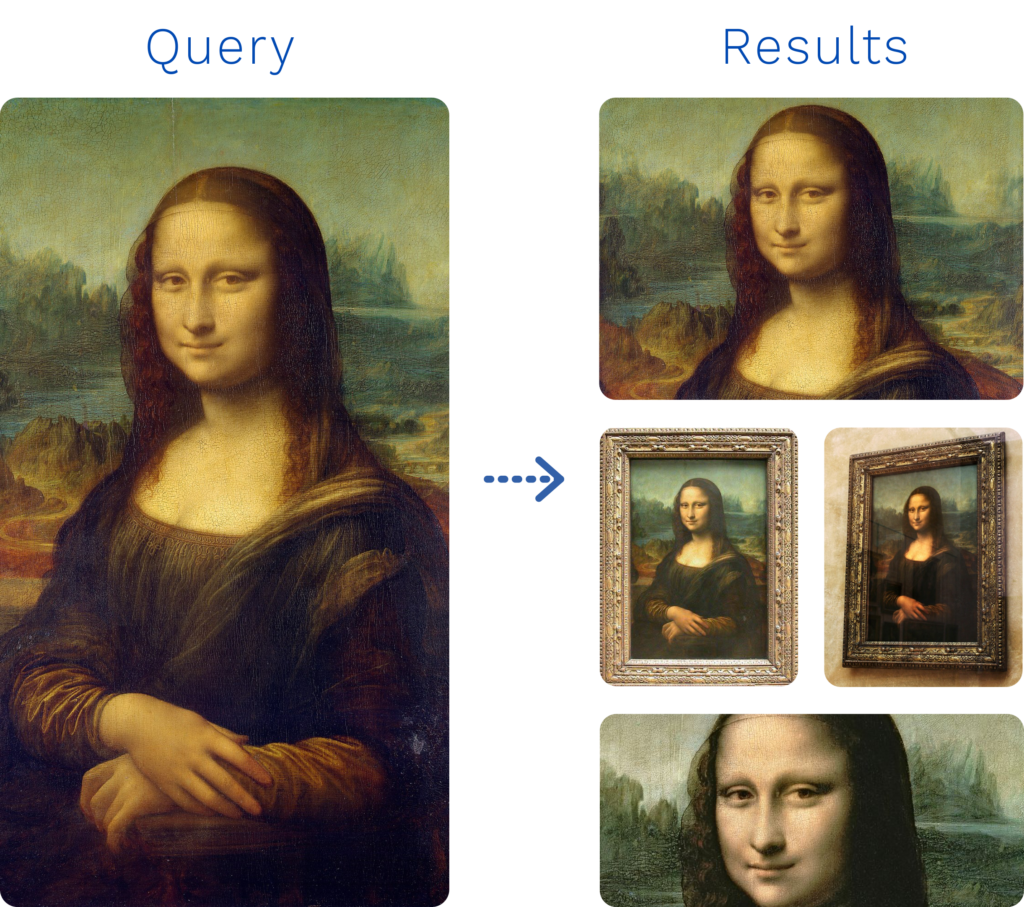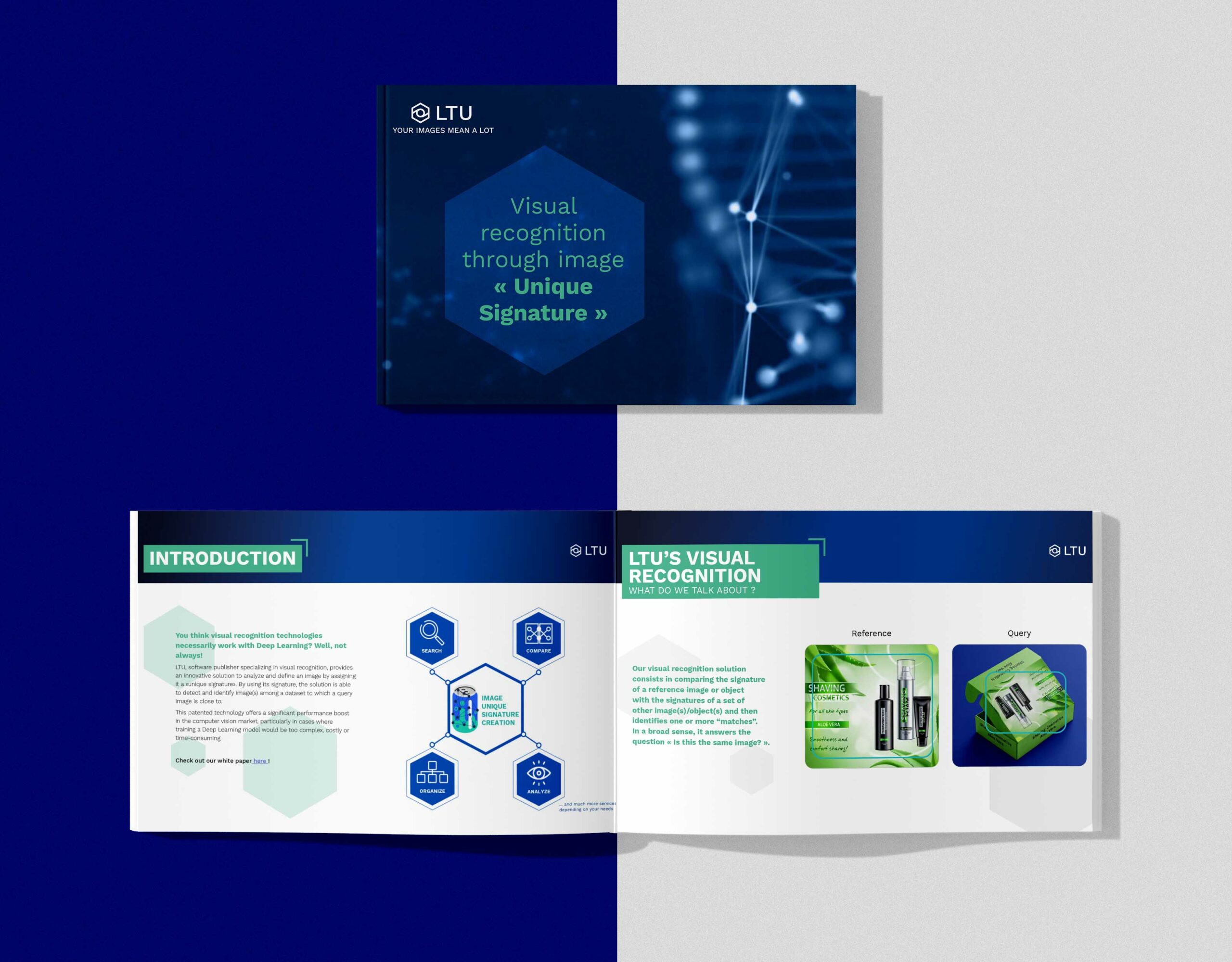You think visual recognition technologies necessarily work with Deep Learning? Well, not always!
A visual recognition solution typically compares a reference object or image to a set of other objects/images and then identifies one or more “matches”. In a broad sense, it answers the question “Is this the same image?”.
LTU, software publisher specializing in visual recognition, provides an innovative solution to analyze and define an image by assigning it a «unique signature». By using its signature, the solution is able to detect and identify image(s) among a dataset to which a query image is close to.
LTU’s unique signature – how it works
This patented technology offers a significant performance boost in the computer vision market, particularly in cases where training a Deep Learning model would be too complex, costly or time-consuming.
The technology developed by LTU has managed to solve the learning time issue. Its algorithm is capable of precisely analysing the characteristics of any image or object. It does not rank an image by typology (landscape, face, animal, inanimate object, etc.) but rather by visual characteristics (curvature, opacity, 3D model, texture, dominant colours and other various metadata).
In practice, LTU’s visual recognition can rely on a single reference image, analyse it and define its unique signature. The signatures of two similar images are then compared directly, which considerably improves the tool’s response time compared to other market solutions: 0.3 second on average to recognise an image!
The benefits
LTU’s visual recognition solution is based on this “single signature” principle, which provides the following benefits:
- A single image is enough: hundreds of reference versions are no longer needed to identify an object with certainty, and they no longer need to be annotated either. This brings about significant savings in both time and energy!
- No training and model learning time required, as the technology can extract information directly from an image;
- The model is robust regardless of the reference image it is fed. It does not build upon the characteristics of an old model or a dataset close to your problematic (no transfer learning);
- Data confidentiality: LTU does not reuse the content you’ve submitted to train and improve its algorithm;
- Energy savings: LTU technology uses less computing power than equivalent Deep Learning-based solutions, and relies on more economical components to reduce its energy footprint.

In practice, an integrated solution
LTU provides a turnkey solution that can be used by a wide range of non-technical staff: marketing, sales, communication, etc. Furthermore, LTU provides user support and assistance in setting up the solution. To get more information, click here ou contact us !
Deep Learning is not always suitable for image or object recognition
To date, existing visual recognition solutions based on Deep Learning work in two steps:
– Establishing a reference dataset: collection of the maximum amount of data available on the image or object to be compared/identified
– Training the Deep Learning algorithms on this dataset: the artificial neural network that makes up the model learns from examples to recognise the reference image or object until a satisfactory score is obtained.
However, projects do not always have such luxury, whether in time, technical resources or human skills to complete a project with Deep Learning. Moreover, some use cases simply do not allow for a large number of reference images… For instance, if I’m looking for reproductions of a work of art, by definition, I only have one reference image to train my model! To know more about the required conditions for an efficient visual recognition solution based on Deep Learning, you can read our article about it.
It’s also important to mention that Deep Learning isn’t out of the question! If it suits your needs, LTU technology can integrate third-party technologies. For instance, you may add object detection and image classification to our visual recognition tool. This way, you benefit from a solution that is customisable, easily integrated and highly efficient.

Which visual recognition technology to choose ?
You think visual recognition technologies necessarily work with Deep Learning? Well, not always!
A visual recognition solution typically compares a reference object or image to a set of other objects/images and then identifies one or more “matches”. In a broad sense, it answers the question “Is this the same image?”.

